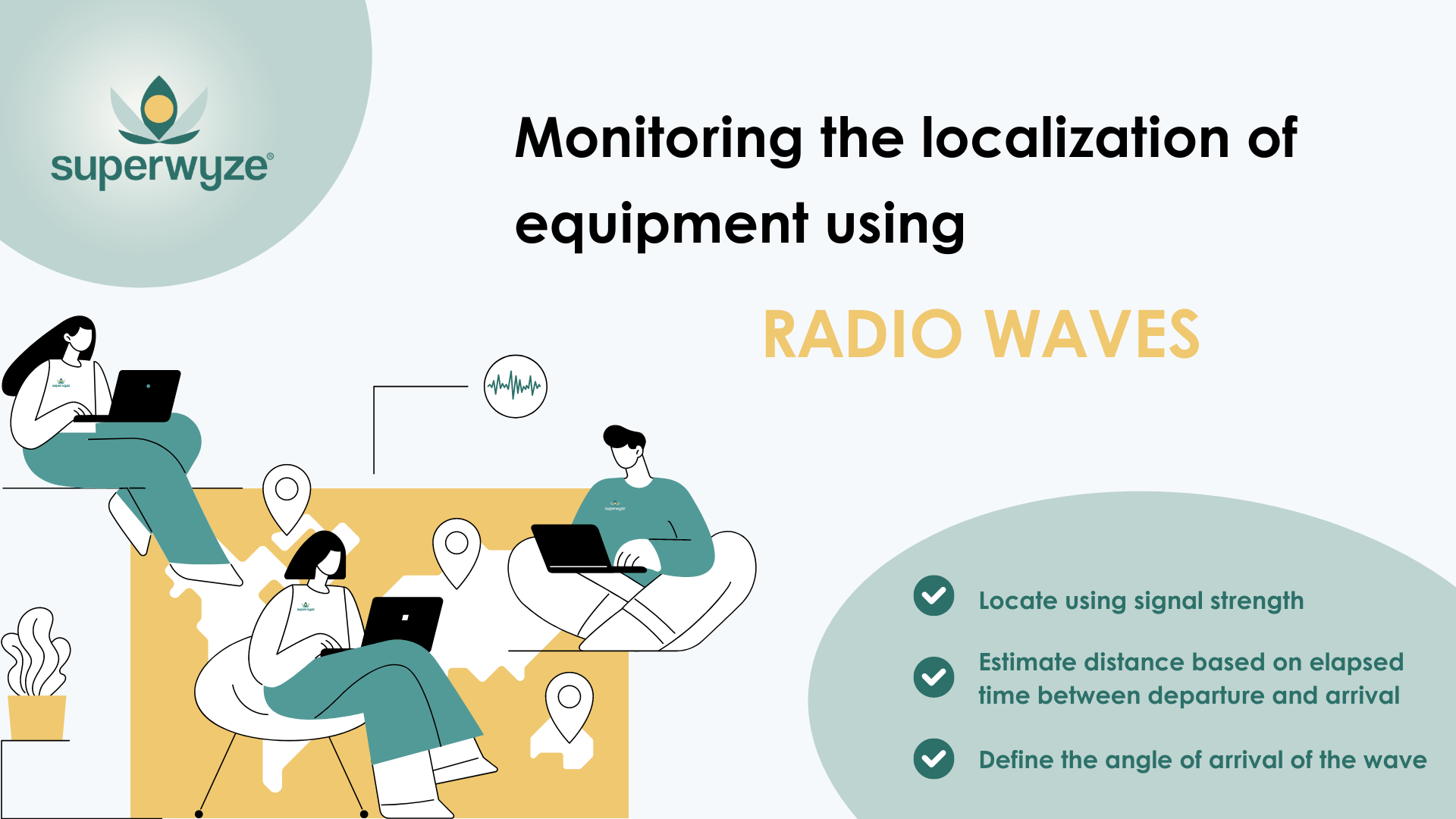Radiofrequency (RF) is an electromagnetic wave (comprising electric and magnetic components) that travels at the speed of light. It can transmit information at high speed. To encode this information, an oscillating wave is emitted with a frequency that constantly varies within a frequency range (this is called frequency modulation, or “FM”!). It’s the way the frequency varies that encodes the information.
In mobile asset tracking applications, sensors use this language to send their identity and the time of transmission. The receiver will “hear” this signal at a certain intensity and at a certain time, and will provide this information.
From there, it is possible to locate the origin of a signal in three ways:
1. POWER: Estimate the distance based on signal strength: the greater its strength, the nearer it is.
-
- With short-range sensors like Bluetooth, we install a receiver in each room, making it easy to determine the room’s identity where the sensor is located.
- If they are long-range sensors, then we can space out the receivers. In that case, we draw a circle around each receiver, where the diameter is determined by the distance (while taking into account potential walls that could affect distance estimation). The position of the sensor is located at the intersection of the three circles.
2. TIME: Estimate the distance based on the elapsed time between departure and arrival times.
Again, multiple receivers are needed, and circles of possible presence are centered around the receivers, with their intersection indicating the position.
3. ANGLE: Estimate the arrival angle of the wave.
For this, multiple antennas are arranged in a square configuration. The sensor must transmit a stable, unmodulated wave. At any given moment, we measure the power received by each antenna and reconstruct the shape and direction of the “wave” at the moment it hits the antennas. The direction is perpendicular to this wave. By doing this with 3 antenna receivers, we obtain 3 lines that intersect.
The third method is the most elegant because it is not influenced by the environment (a wave’s angle isn’t altered by passing through a wall). However, it requires installing a heavy network of antennas on the ceilings.
The second method is equally elegant because here, the speed is also not influenced by the environment. However, it requires devilishly precise clocks to detect distances on the order of meters (since the wave travels at 300,000 km/s). There are physical tricks to overcome this drawback, but unfortunately, they result in high energy consumption, making sensors less autonomous and expensive.
Superwyze combines performance with ease of use. The selection of our sensors stems from a specific set of requirements. In this case, they only support method 1 (power-based estimation). However, their impressive range allows for spacing out the receivers.
To achieve the desired localization performance, it is crucial to understand the impact of walls and objects on the received power by the receivers. Superwyze has therefore developed strong expertise in modeling and calculation to deliver these advanced sensors to healthcare facilities.
To date, no company has advanced as far in mastering the localization of micro-sensors.



